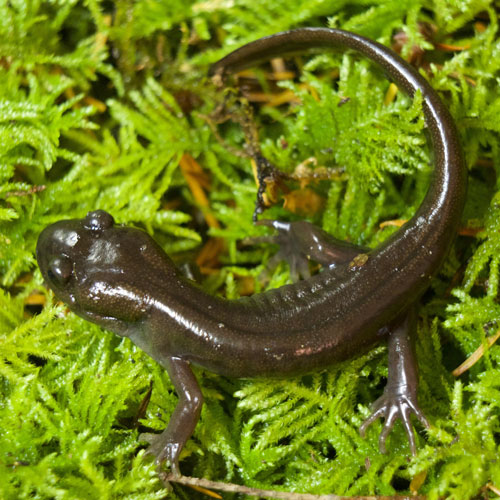Fast Facts
Where they live
- View a map of where they live.
- The Northwestern salamander is restricted to the Pacific coast of North America. In Washington State they are found west of the cascades, including Whidbey, Bainbridge and Vashon islands.
- Found in a variety of moist habitats including open grasslands, woodlands and forests near freshwater sources.
- Spend most of their time underground or under rotting logs.
Breeding
- Breeding season is Feb-April. In the high elevations of the Cascades, breeding frequently starts in late spring, from June to August.
- Eggs masses are attached to underwater plants and grasses and are hard to the touch.
- Egg masses accumulate algae that grow on the inside of the eggs, giving them a green color.
- Larvae mature in 12-14 months. In higher elevations, the larvae often overwinter twice and will mature over three seasons.
- Neotonic adults are common and the frequency of occurrence increases with elevation levels.
Cool Biology Facts
- Larvae and terrestrial adults are mildly poisonous, because of this they can generally survive alongside predatory species, even introduced fish and species such as bullfrogs.
- When disturbed, make a ticking sound and get into a defensive posture.
- They butt heads and raise tails while emitting a sticky white poison from glands behind eyes and along back and tail when threatened and lash tails to spread the poison.
Threats
- Main threats are habitat destruction and deforestation. View their status on the IUCN Red List of Threatened Species.

Amphibians & Reptiles of Washington
Do you know where rattlesnakes live in our state? Or which salamander breathes through its skin? Explore the fascinating diversity of the 26 species of amphibians and 28 reptiles found in Washington state.


